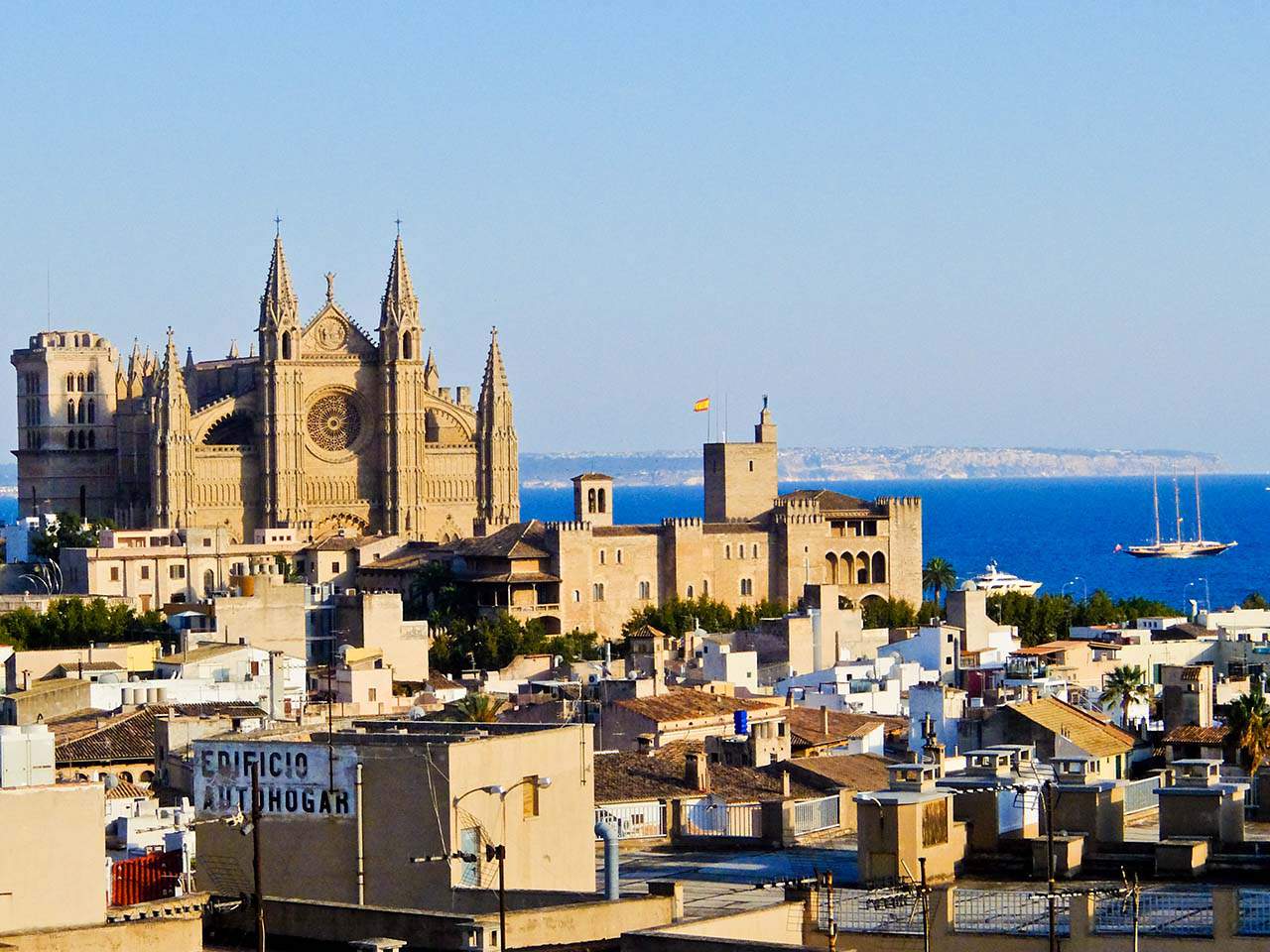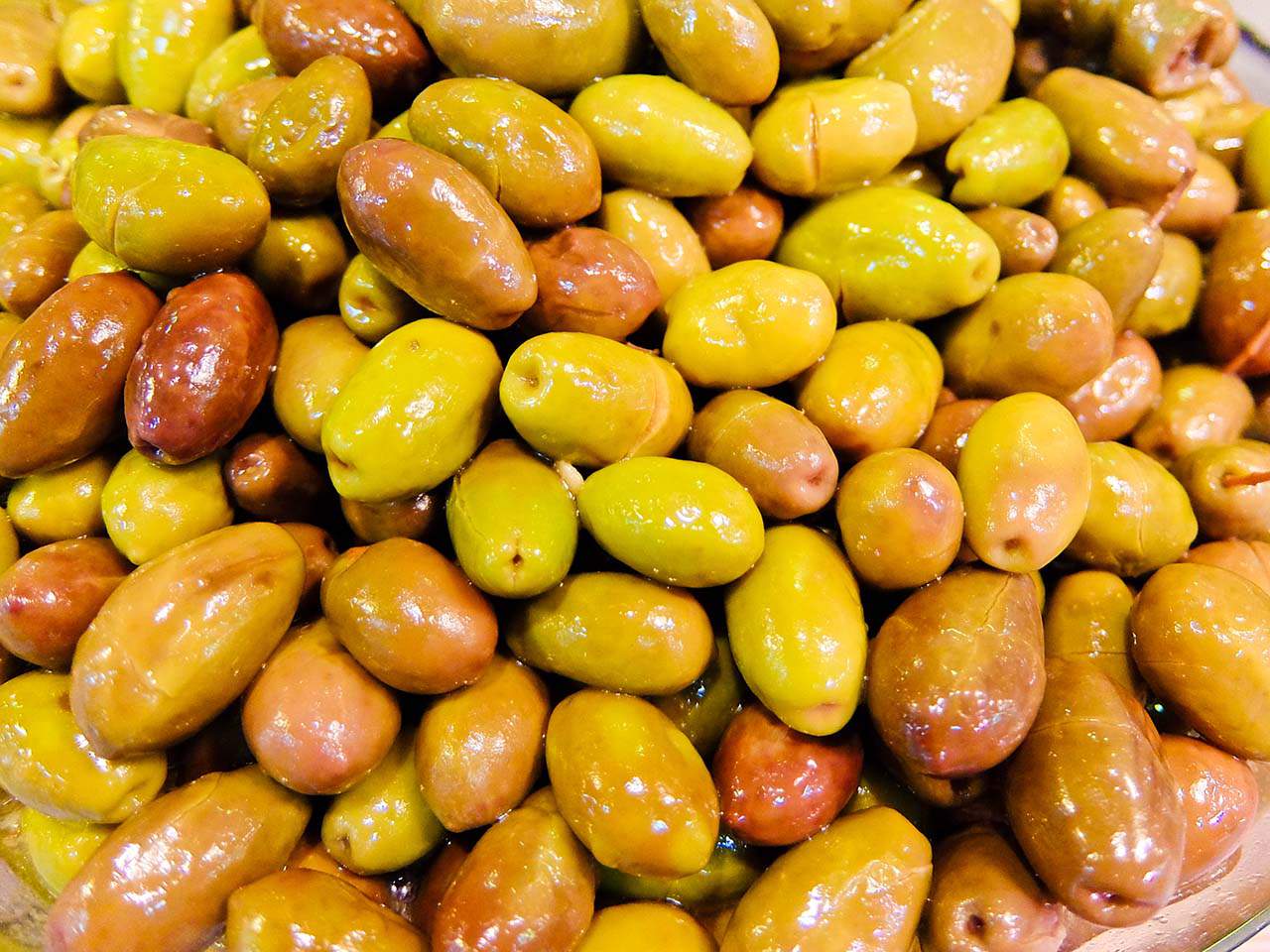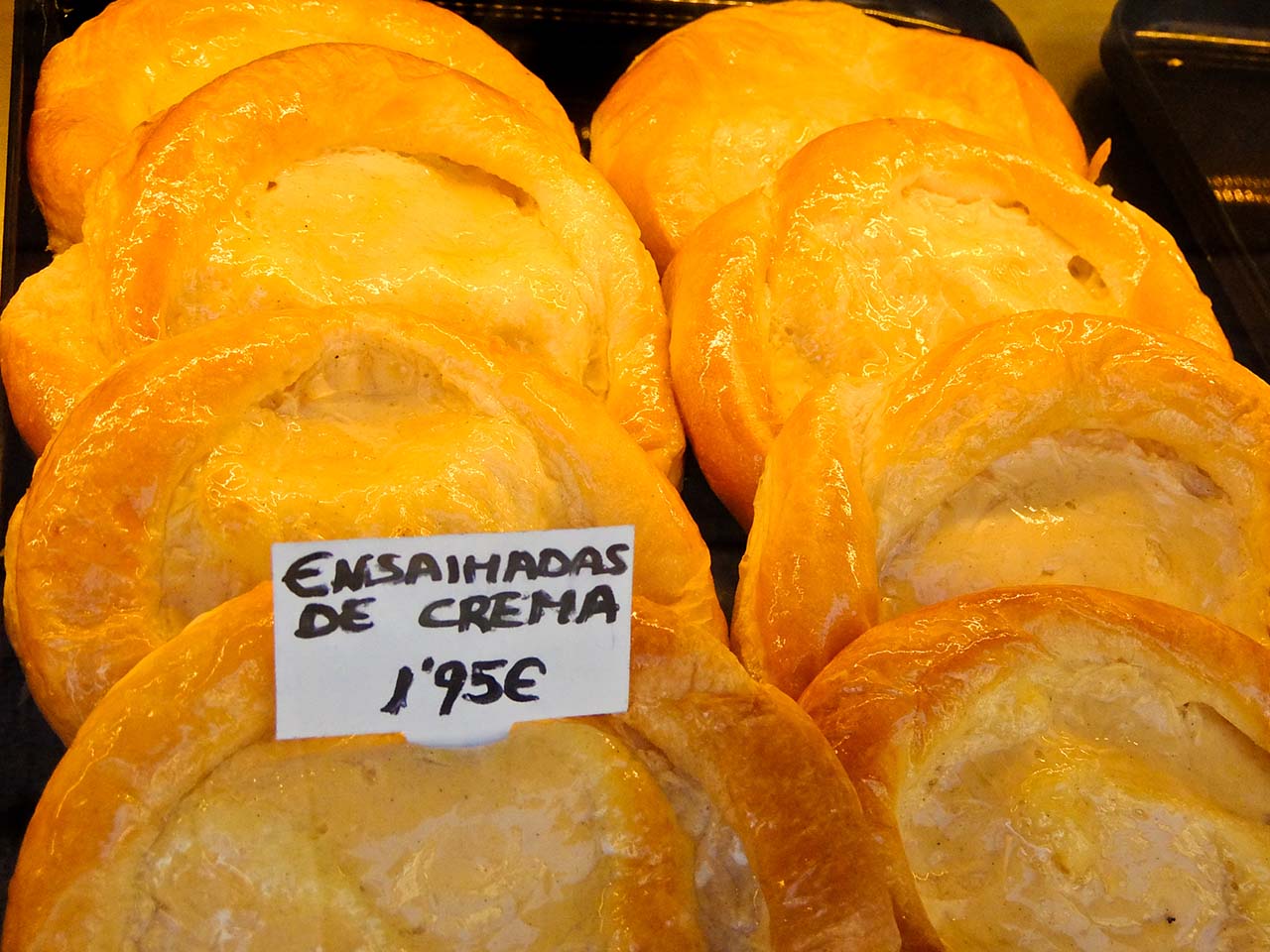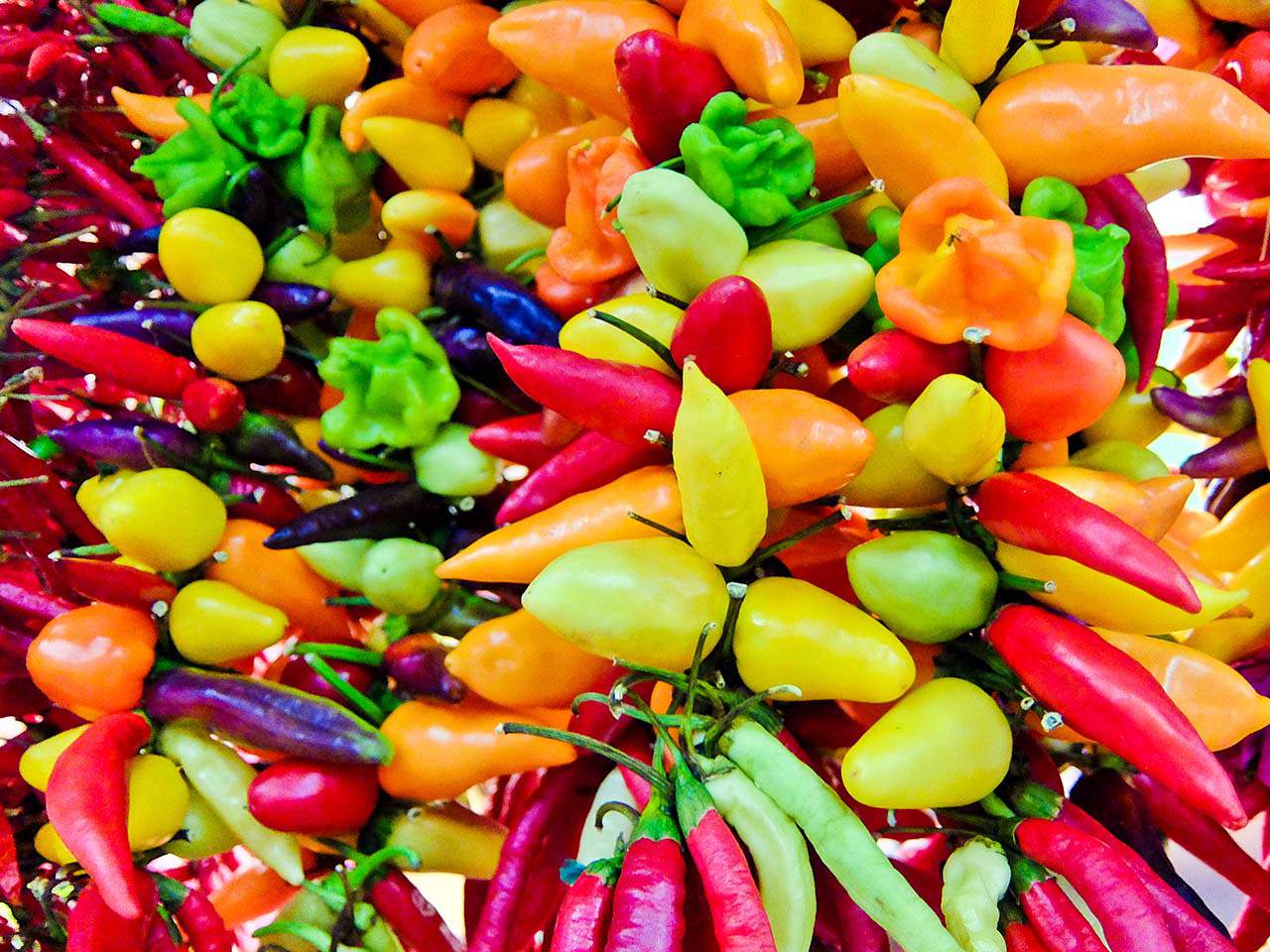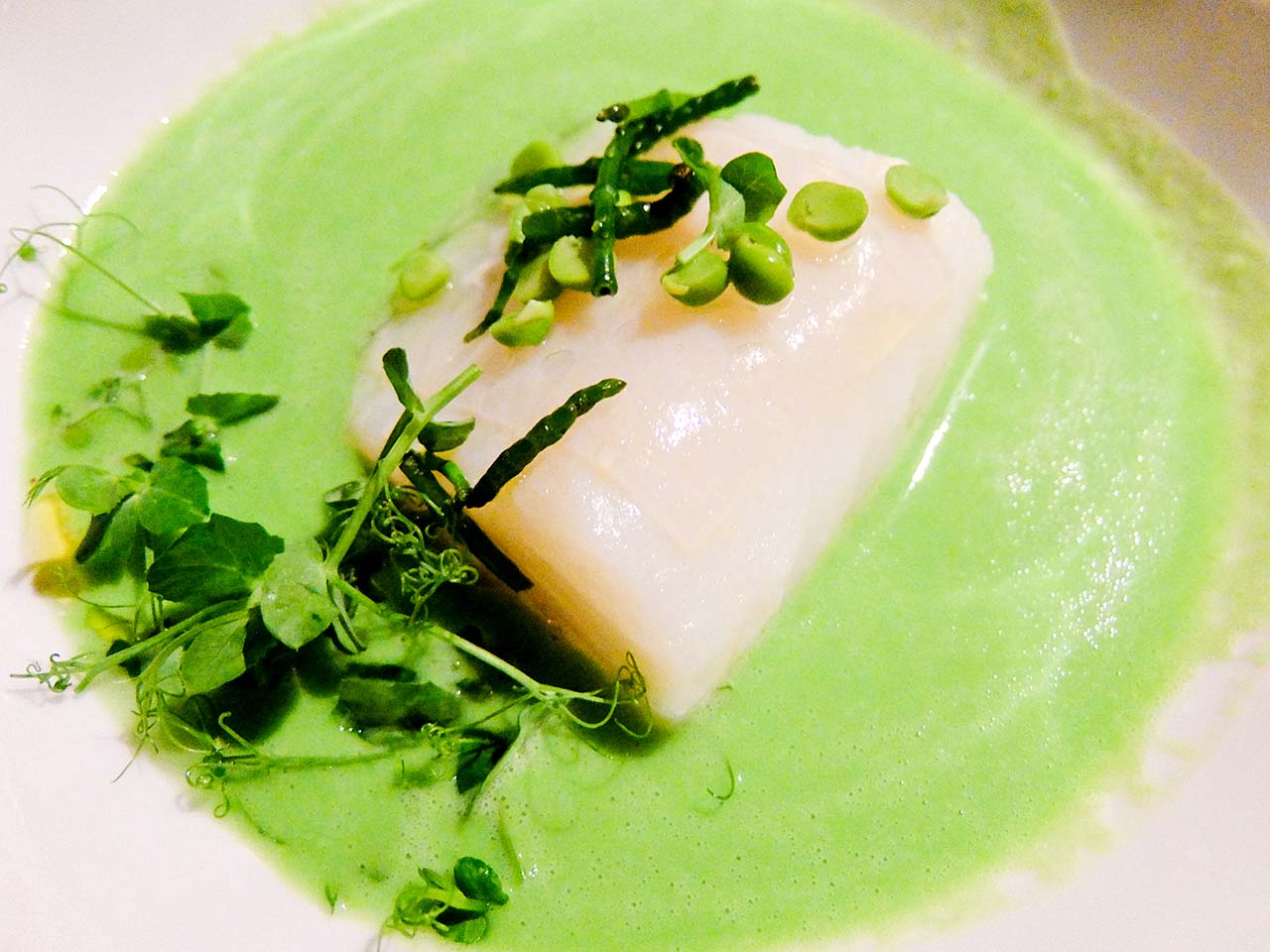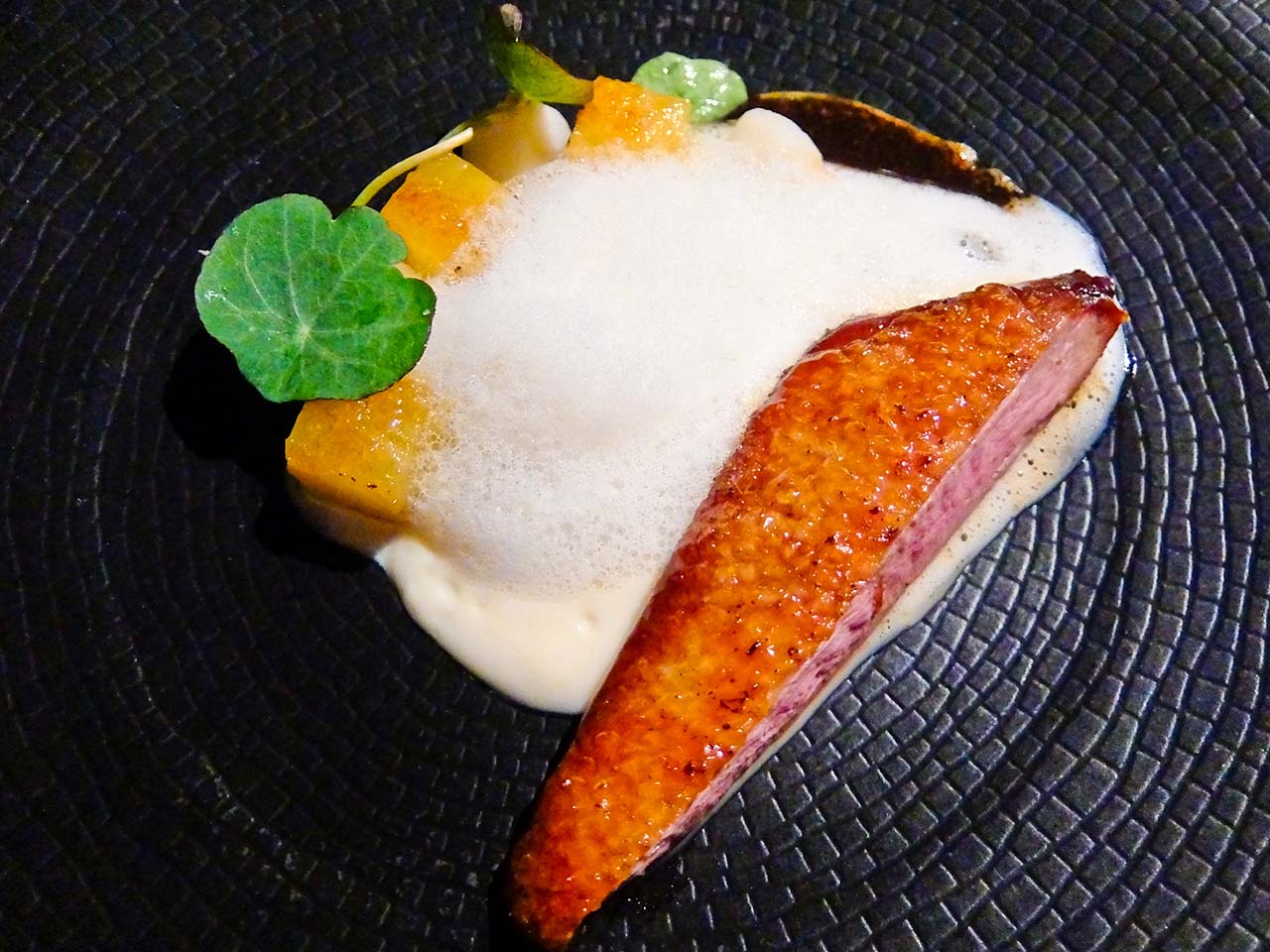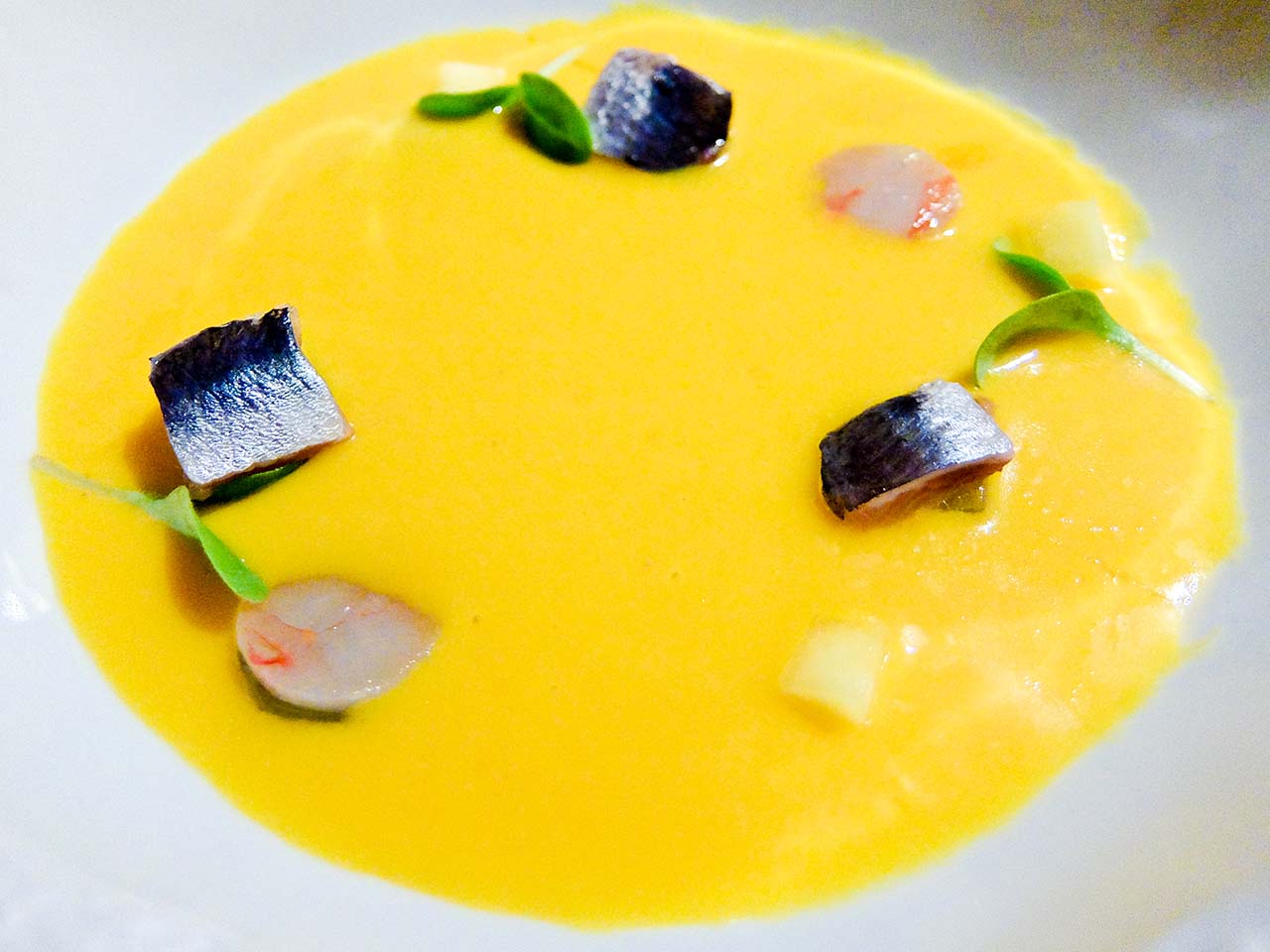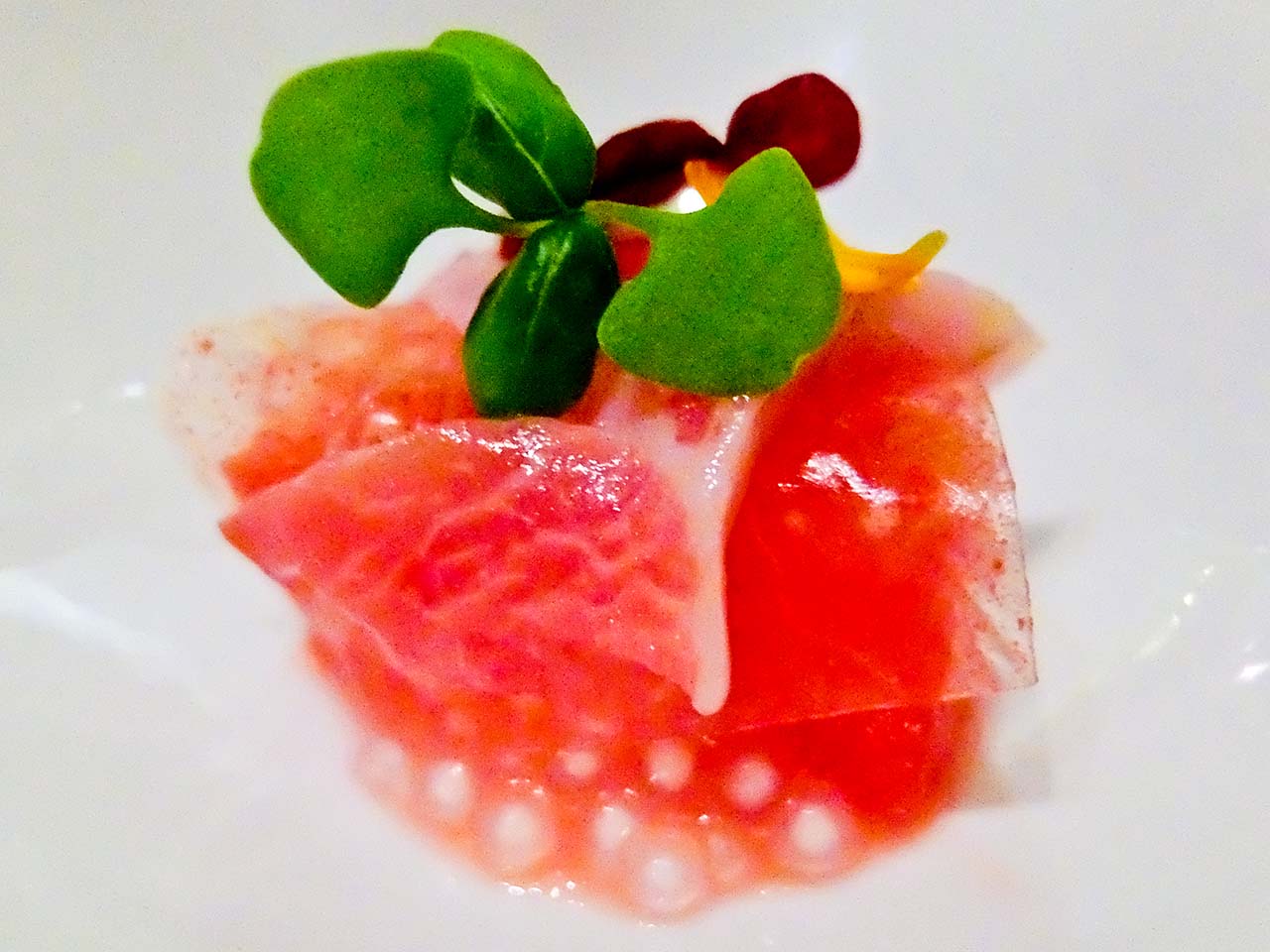Mallorca, the largest of the Spanish Balearic Islands, sits in the Mediterranean and has always been a cultural melting pot. It started with the Romans who stayed until the fifth century, planting olive trees and vines. Then came the Arabs. They were ousted by the Kings of Aragon and the island has been Spanish ever since.
Paella and Spanish omelette are typical and available everywhere but it would be a shame to miss out on the regional specialities.
Mallorcan cuisine has its roots in a peasant lifestyle where fishing and farming were essential for survival in an island marooned far from the Spanish mainland. Cereals and olives make up most of the crop, while almond trees thrive in their millions.
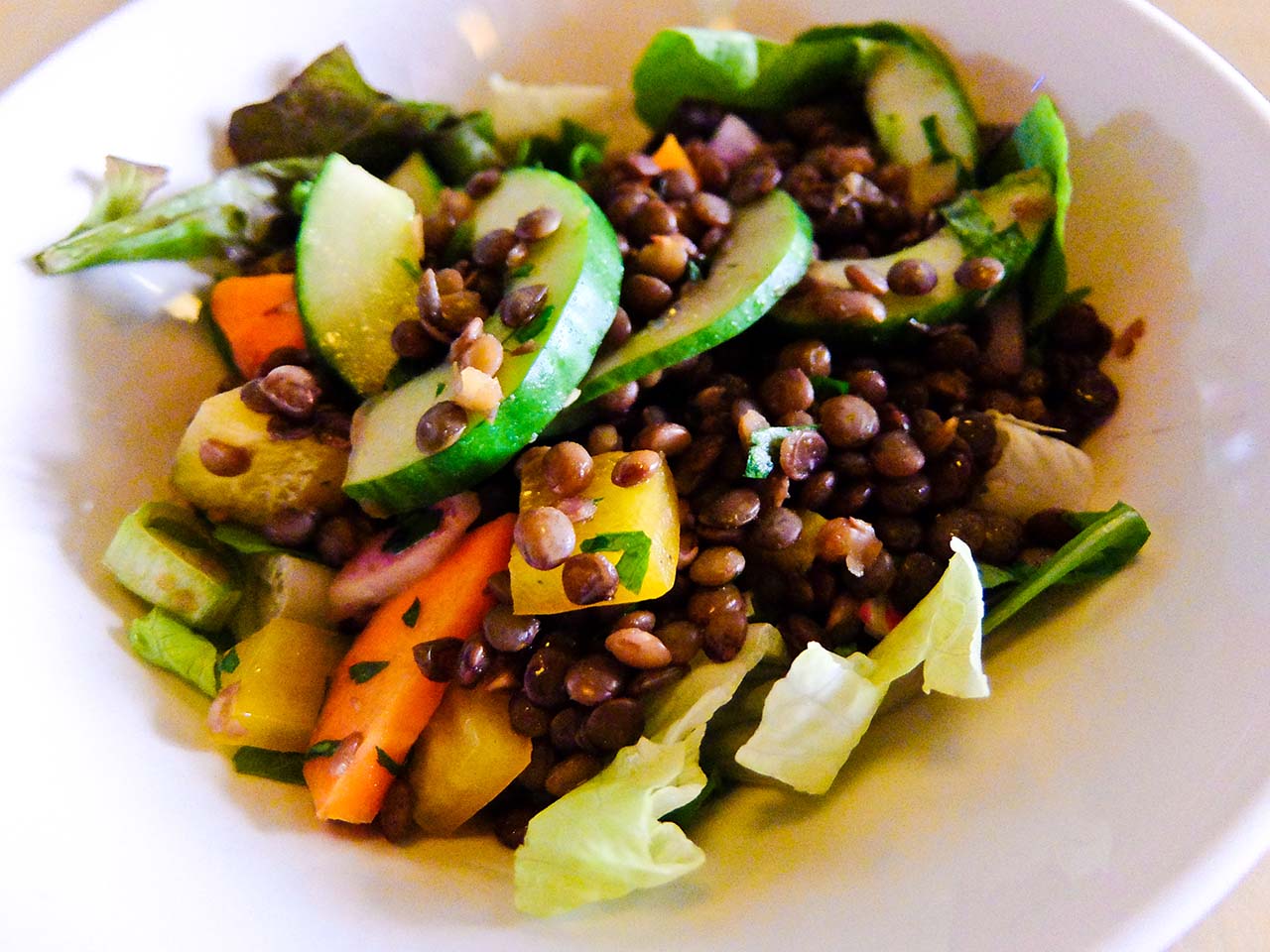
Lentil Salad (c) Rupert Parker
As well as typical Mediterranean vegetables like peppers, zucchini and aubergines, potatoes are widely cultivated. The meat of choice is pork, eaten when young as suckling pig, or wrapped in cabbage and slow cooked in wine and, of course, cured as sausage or salami. Lamb and goat are also available and their offal features on many menus.
Wine has been made here since Roman times and, since it’s not usually exported, you’re in for a nice surprise. Five areas, all with separate climates, create distinctive wines, usually from indigenous grapes such as Callet, Manto Negro and Prensal Blanc. White wines are fresh and fruity, whilst the reds are full bodied and earthy. The Spanish ‘Denominacio d’Origen’ classification recognises two regions in Mallorca – Binissalem in the center of the island and Pla i Llevant in the East. Local wine is served in most restaurants and you can’t go wrong if you chose from one of these.
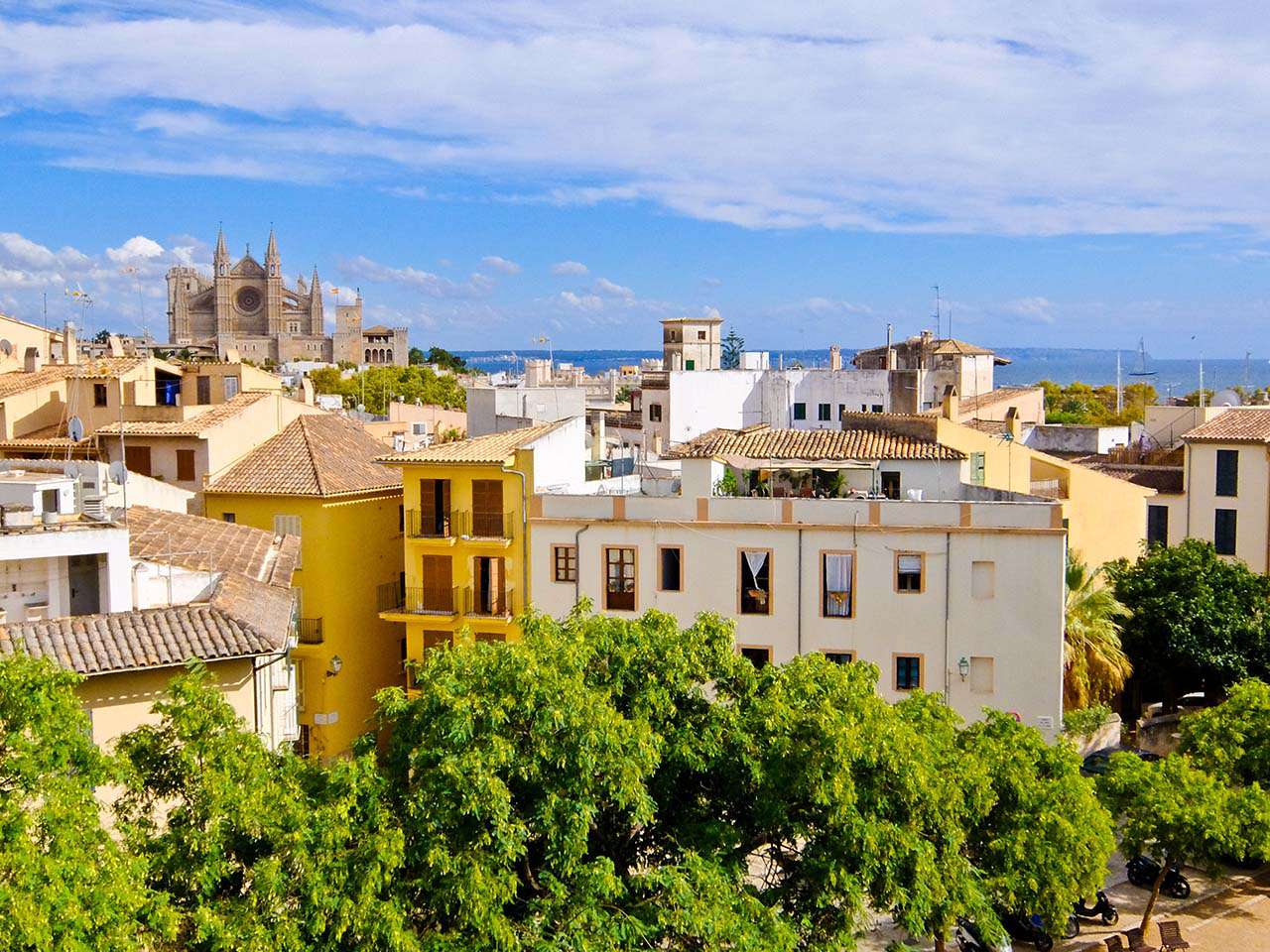
Palma (c) Rupert Parker
Palma is the charming seaside capital where the architecture is a mix of medieval and art nouveau. You’ll find traditional food here but younger chefs, trained at the city’s own culinary school, are taking the islands classic dishes and transforming them into something lighter yet still distinctive. Mallorca now boasts seven Michelin starred restaurants, scattered over the island, but many of these close in the winter so the Chefs open pop-ups in Palma.
⇒ Read our guide to Things to do and visit in Mallorca
Markets
Palma’s main covered market, Mercat Olivar, is right in the centre, near Placa d’Espana, and starts early but finishes by 2pm. The stalls focus on local and seasonal produce and many of the fruits and vegetables are organic. Fish and seafood are also a feature here, not surprising since the sea is so close, and the selection is one of the best in Spain.
Where the market comes into its own, however, is the wide range of local cheeses and cured meats, particularly Sobrassada, the home grown version of Chorizo with red pepper.
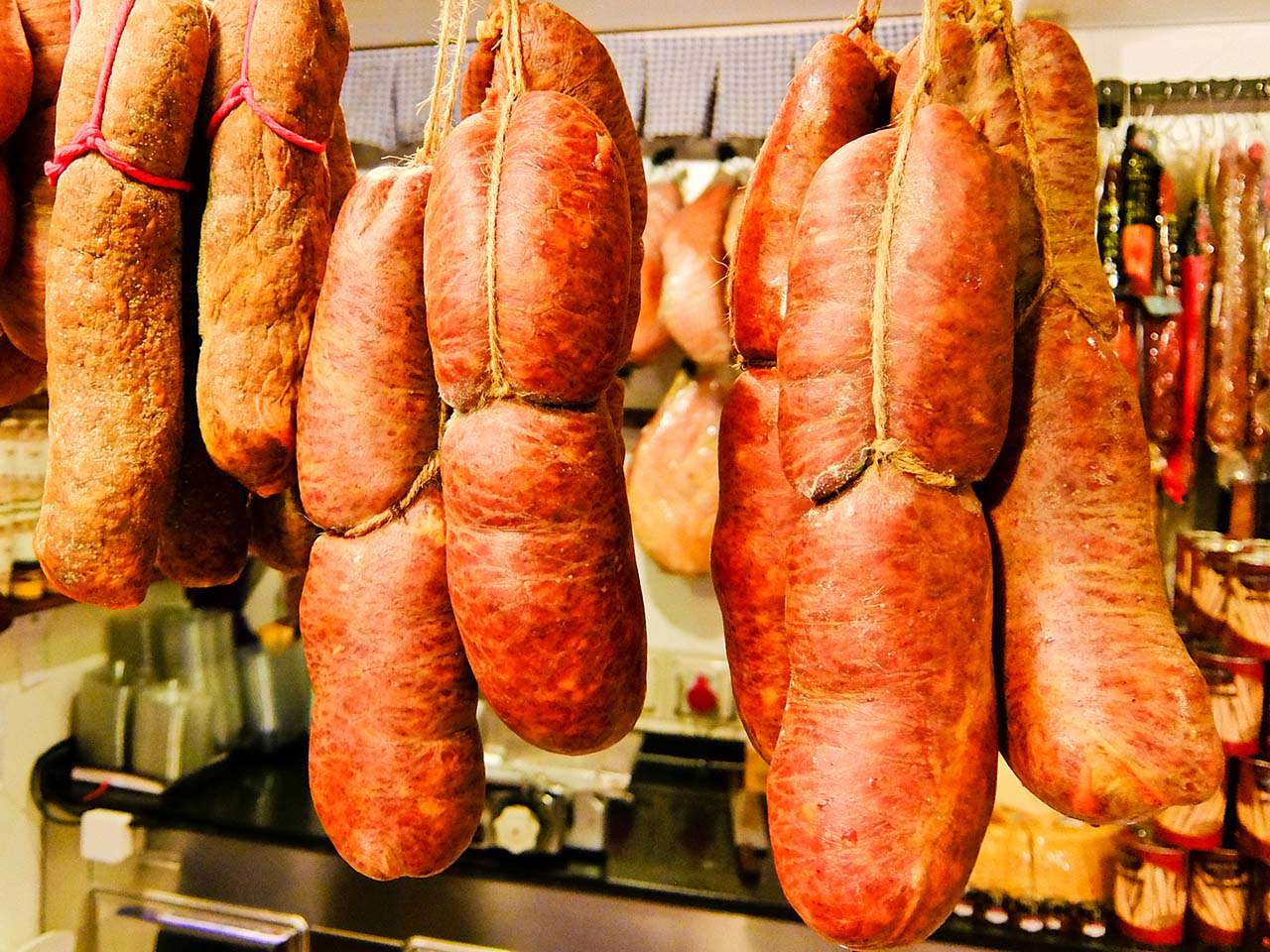
Sobrassada (c) Rupert Parker
Sobrassada is made from the whole pig, usually in the autumn, and the meat is chopped with the fat, mixed with huge amounts of paprika, cayenne and salt, then stuffed into intestines. The sausages are hung for several weeks to partially cure, but the inside retains its smooth and creamy texture. It’s eaten on its own, spread on bread, added to stews and even fried with eggs. Many families still make their own Sobrassada to their secret recipe and you’ll find many variants in the market.
Palma’s best coffee shops and restaurants
Ca’n Joan de S’Aigo is Palma’s oldest coffee house and is the best place to sample another of the island’s specialities. Ensaïmada is a coiled sweet flaky pastry made from flour, sugar, yeast, eggs, and lard, eaten throughout the day. Mallorcans dip the sugar-sprinkled pastry into their morning coffee but later it becomes an afternoon snack, stuffed with custard cream, chocolate or even slices of Sobrassada. It comes in various sizes but it’s always deliciously light and fluffy. The coffee house is also famous for its range of ice creams and you shouldn’t miss the variety flavoured with local almonds.
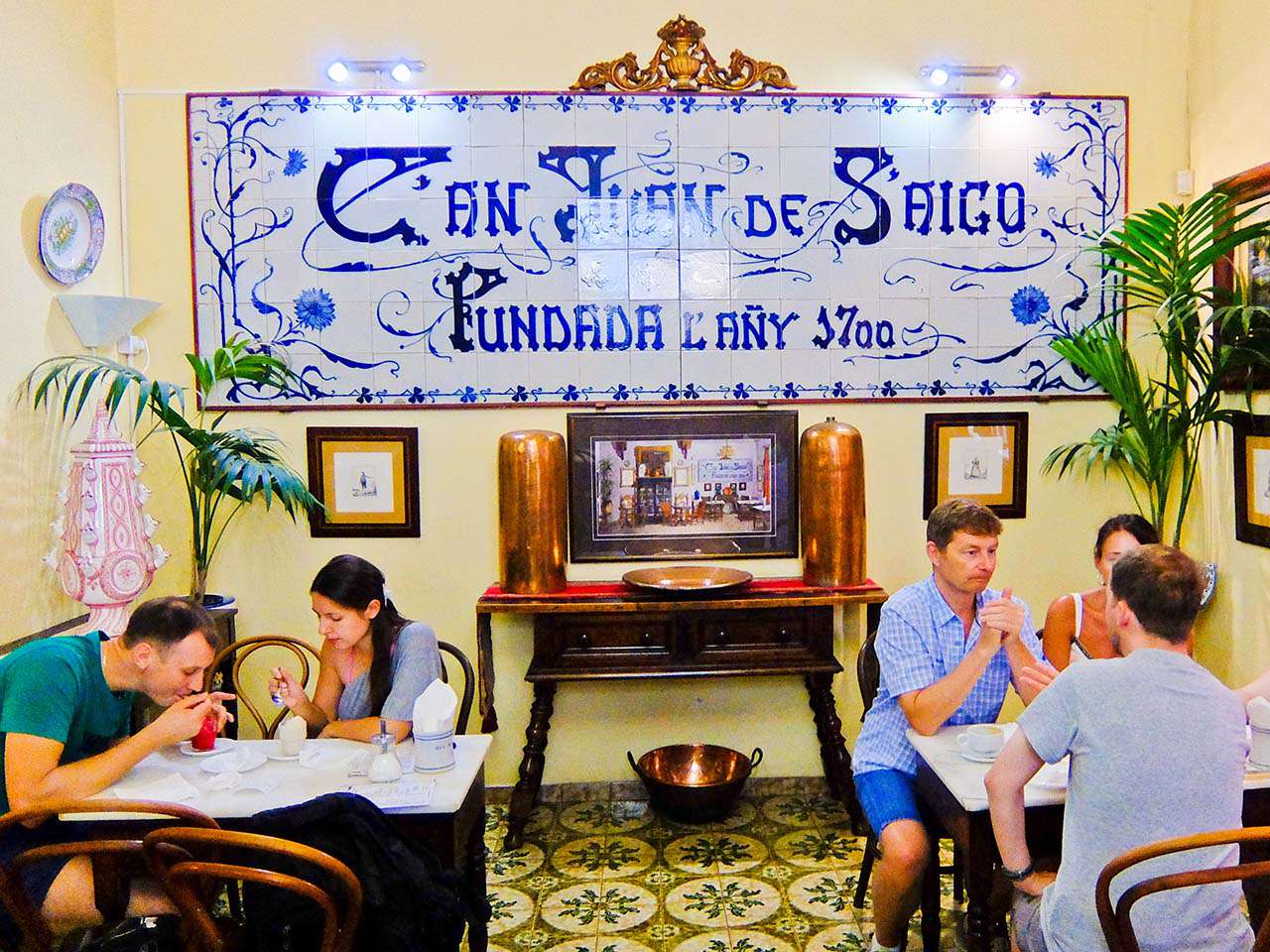
Can Juan de Saigo (c) Rupert Parker
Es Rebost café advertises “Mallorca Fast Slow Food” made with organic ingredients. Pa amb Oli is the archetypical Mallorcan starter: slices of special brown bread are rubbed with raw garlic and half a local Ramallet tomato, then drizzled with olive oil. You can eat it just with salt but here it’s served with a generous helping of olives and pickles and a choice of cured meats, including Sobrassada. Another local speciality is Coca, a flat bread, the Mallorcan equivalent of pizza, and you’ll find it everywhere. Coca de Trampò is topped with tomato, roast peppers and onion, dressed with salt and olive oil. Another combination is onion, garlic, honey and rosemary, but my favourite is Swiss chard with anchovies and tomatoes.
British chef Marc Fosh has been in Mallorca for 22 years, after stints in London and San Sebastian, where he was introduced to modern Spanish gastronomy. His take on Mallorcan cuisine is that it’s a mix of the rustic and peasant, a typical example being Tumbet, a baked dish of layered potato, courgette, aubergine and tomato. What inspires him are the local products, particularly the olive oil and sea salt, a double act which is the base of all his dishes. Even better, nowhere on the island is more than half an hour away, so he can always guarantee exceptional freshness.
Fosh is about to open two new restaurants in Palma but his long established Michelin-starred Marc Fosh doesn’t disappoint. Thin slices of tuna wrapped round cubes of watermelon with tapioca demonstrates how he matches flavour. A chilled yellow tomato Gazpacho with red prawns, sardine chunks and smoked cucumber seems a perfect combination. Steamed salt cod, with aloe vera and samphire, resting on a pea and lemongrass puree, is inventive. Even a perfectly cooked piece of duck breast is topped with eucalyptus foam and rests on salt baked baby turnips and pineapple. I wish him well in his new ventures.
Best of the rest
Caballito de Mar serves the freshest of fish.
La Boveda is famous for its tapas.
Bon Lloc is an inventive Vegan restaurant.
Aromata is Michelin-star chef Andreu Genestra’s offering in Mallorcal. It is in an ancient courtyard and is good value for lunch.
Es Baluard is in Palma’s Museum of Modern & Contemporary Art, has great sea views, and serves a mix of traditional and modern cuisine.
Typical Mallorcan dishes
Caragols – Mallorcan snails are quite different from the French Burgundy variety and are usually boiled with fennel and mint and served with aioli, garlic mayonnaise.
Sopas Mallorquinas – Mallorcan stew of seasonal vegetables including onion, garlic, tomatoes, cabbage, beans and fine slices of local bread. Meats such as pork or bacon are optional and it can also be made with fish.
Arròs Brut – translated as “dirty rice”, this stew is a combination of rice, different meats, mushrooms and a variety of vegetables.
Frito Mallorquin – potatoes, onions, eggplant, fennel, peppers, garlic, olive oil, herbs and spices are fried with lamb or pig offal, usually just liver and kidney.
Llom amb Col – pork loin, Sobrassada and Botifarró wrapped in cabbage leaves and slowly cooked with tomatoes, wine, pine nuts and raisins.
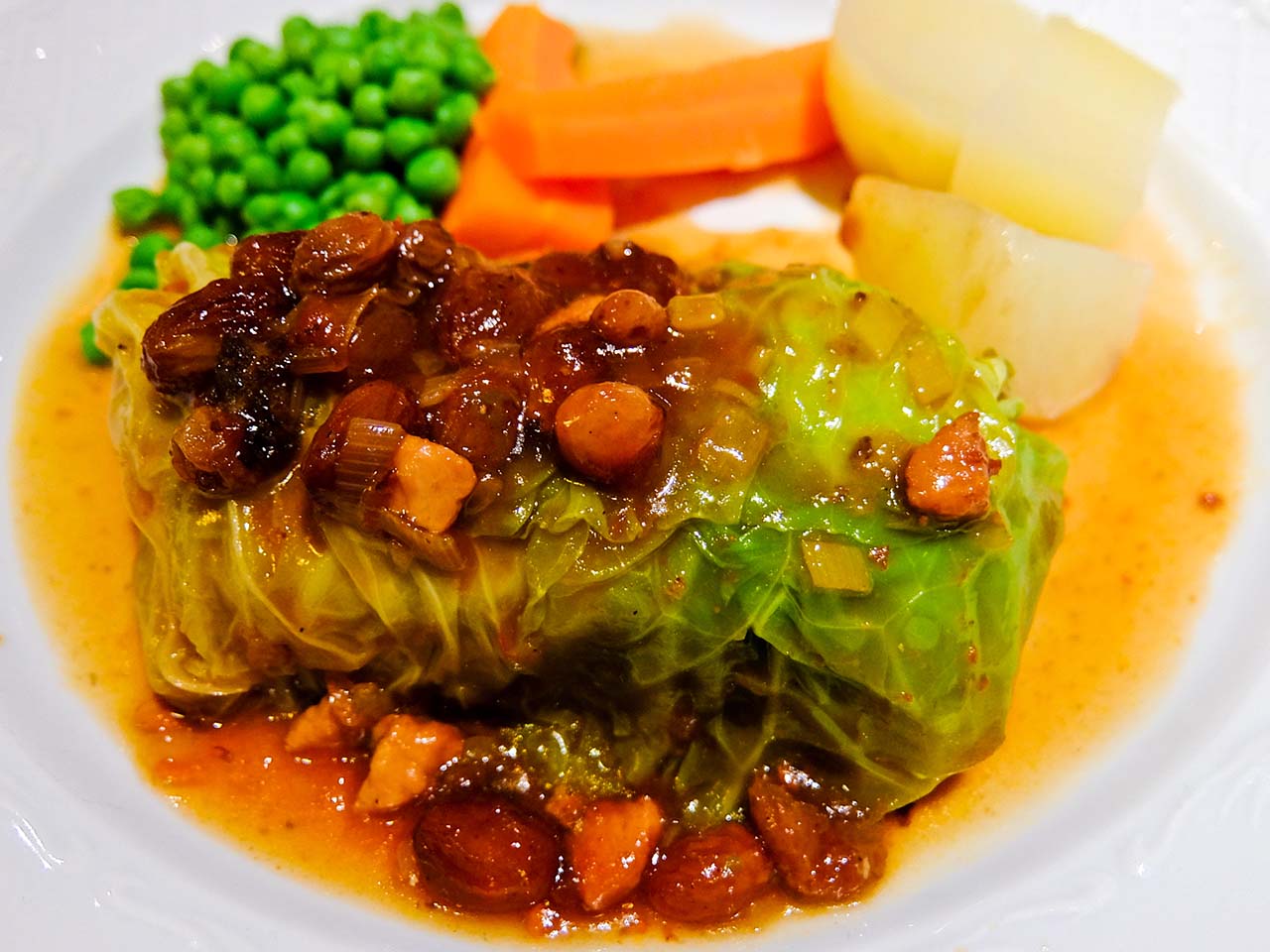
Pork wrapped in cabbage (c) Rupert Parker
Porcella – suckling pig, marinated for 24 hours in wine, garlic, bay leaf, thyme, rosemary, lemon, salt and pepper, and then slow roasted. It’s often eaten for Christmas dinner.
Trampó – a simple salad with tomato, green pepper and onion dressed with salt and olive oil. Extra ingredients include capers, olives, potatoes, boiled eggs, chickpeas and even tuna.
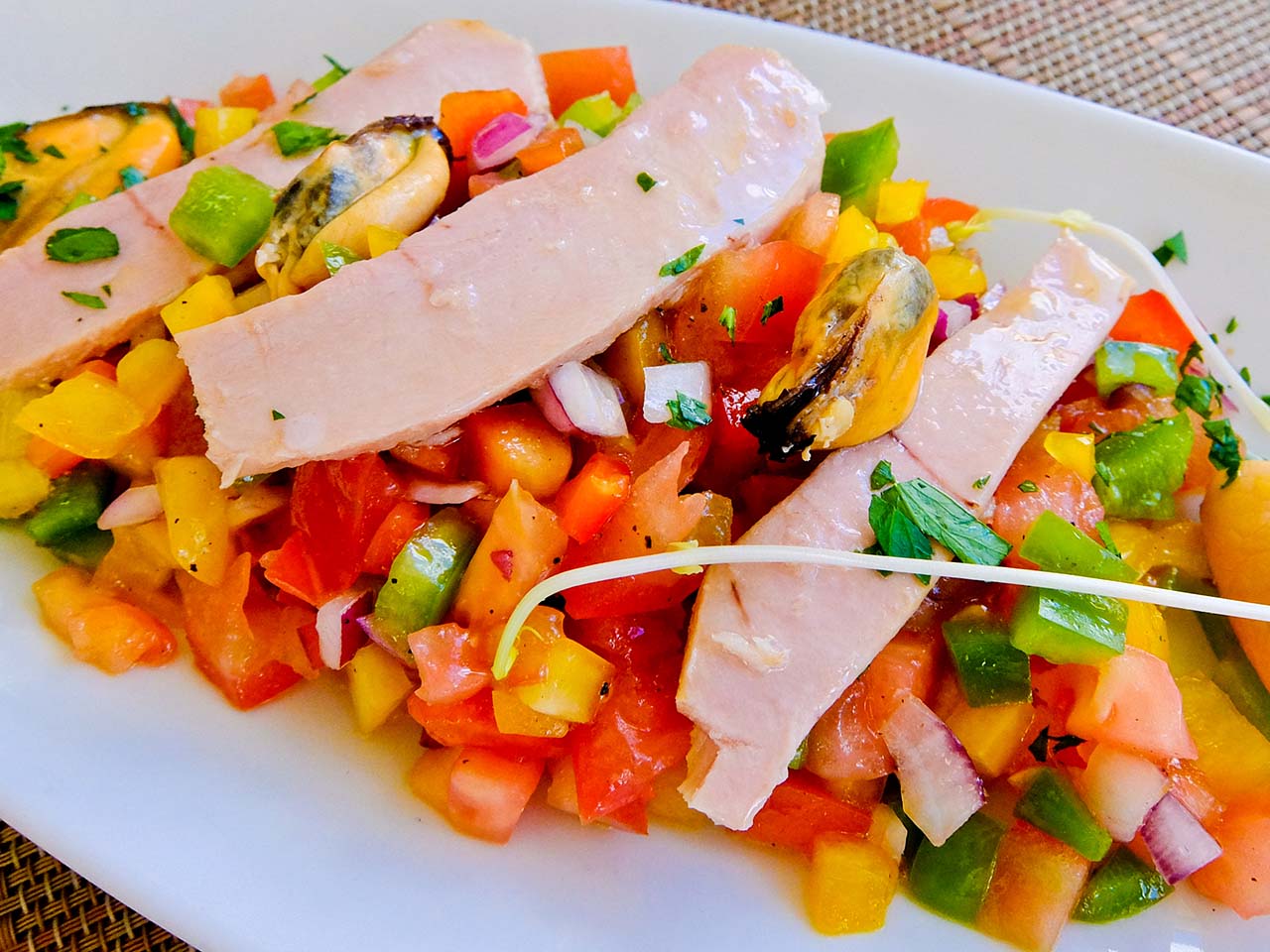
Trampó with Seafood (c) Rupert Parker
Gató de Almendras – sponge cake made with almonds.
Coca de Patata – sweet buns made from mashed potatoes, flour, olive oil, eggs, sugar and lard served dusted with icing sugar.
Fact file
STAY: The newly opened Nakar Hotel, with its rooftop swimming pool, makes a good base in the city centre. It’s worth checking out its Cuit restaurant, with food by Chef Miquel Calent, and the bar on the roof comes alive at night.
Read also our reviews of Hotel Bon Sol and Iberostar Grand Hotel Portals Nous.
MORE INFO: Visit Palma has information about the city.

